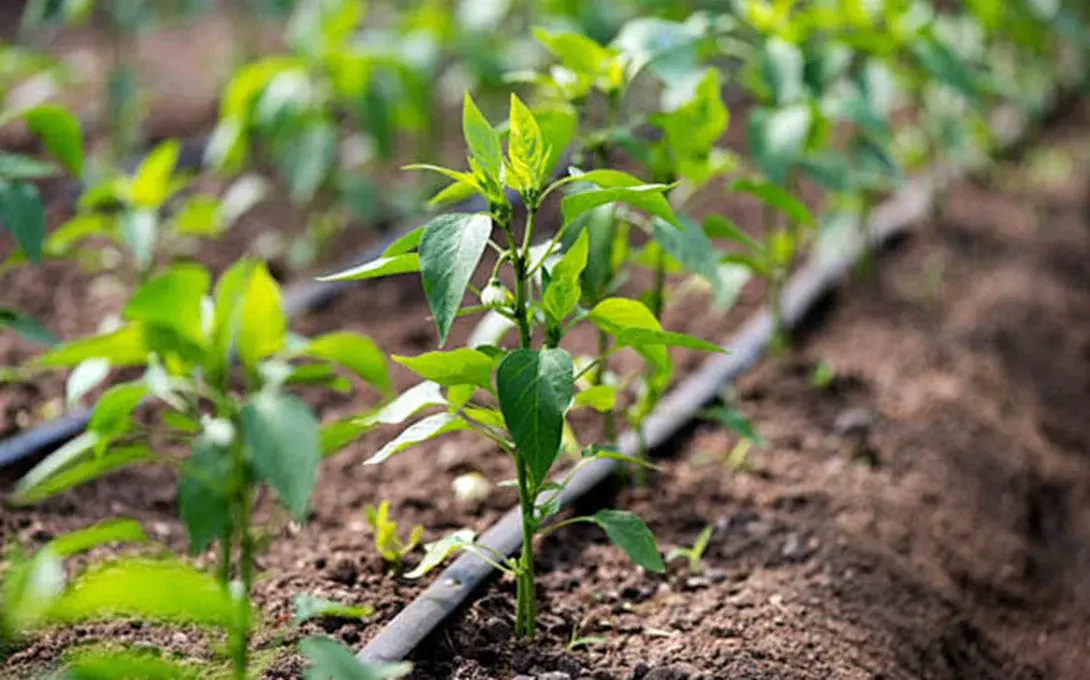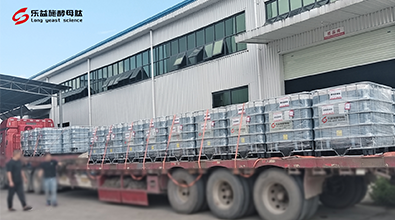Osmotic Adjustment and Water Retention
One of the key drought-alleviating functions of yeast peptide fertilizers is their ability to enhance osmotic adjustment at the cellular level. The peptides stimulate the production of compatible solutes such as proline and glycine betaine—critical compounds that help maintain cell turgor when water becomes limited.This osmotic regulation allows plants to retain moisture more effectively, enabling them to continue essential metabolic activities even as soil moisture decreases.
Antioxidant Defense System Enhancement
Drought stress typically leads to excessive accumulation of reactive oxygen species (ROS), causing damage to plant tissues. Yeast peptide fertilizers promote the expression of antioxidant enzymes such as superoxide dismutase and catalase.By enhancing antioxidant capacity, these fertilizers help neutralize excess ROS, mitigate oxidative damage, and maintain photosynthetic activity—supporting plants in sustaining vigorous vitality during critical stress periods.
Root System Development
Yeast-derived peptides significantly stimulate root elongation, branching, and density. A stronger root system gives plants access to a larger soil volume, improving both water and nutrient acquisition.This improved root architecture not only enhances drought tolerance but also supports healthier plant development throughout the growing cycle.

How Yeast Peptides Improve Soil Microbiology and Nutrient Use Efficiency
Yeast peptide fertilizers offer critical benefits beyond coordinated plant intelligence by emphatically impacting the soil microbiome and improving nutrient availability. This double activity makes a more favorable environment for plant development and increases resistance.
Stimulating Beneficial Microbial Populations
The application of yeast peptide fertilizers promotes the growth of beneficial soil microbes such as bacteria and fungi involved in nutrient cycling and organic matter breakdown.
Yeast peptides provide easily metabolizable carbon and nitrogen sources, boosting microbial activity and creating a biologically richer, more resilient soil ecosystem.
Enhancing Nutrient Solubilization and Uptake
Under drought stress, key nutrients—especially phosphorus and micronutrients—often become less available. Yeast-derived peptides improve nutrient solubilization through microbial stimulation and natural chelating effects, enabling plants to access and absorb essential nutrients even when soil moisture is low.
Improving Soil Structure and Water-Holding Capacity
Microbial byproducts fostered by yeast peptide fertilizers application help form stable soil aggregates, enhancing soil porosity, aeration, and water infiltration. Improved soil structure leads to better water retention and easier root penetration—both critical factors for surviving drought.

How Yeast Peptide Fertilizers Strengthen Drought Resistance in Practical Applications
Unlike traditional drought-relief inputs that focus primarily on water retention, yeast peptide fertilizers enhance drought resistance through broad and field-proven biological effects. Their influence spans plant physiology, soil function, and post-stress recovery.
Improving Water-Use Efficiency Throughout the Growth Cycle
Applying yeast peptide fertilizers at key stages—early growth, flowering, or fruit development—helps crops maintain physiological stability even when soil moisture decreases. Specifically, it promotes robust seedling establishment in the early stages, reduces midday wilting, delays the decline in photosynthetic efficiency, and maintains a favorable canopy condition. This significantly enhances water use efficiency throughout the entire growing season, thereby ensuring stable yields under drought conditions.
Strengthening Stress Memory and Accelerating Recovery
Yeast peptides can induce a “stress memory” effect in crops, enabling them to activate protective mechanisms more rapidly when facing drought again. Treated crops exhibit faster recovery of metabolic functions, leaf expansion, and root regeneration after rewatering, which is particularly crucial for production recovery in regions prone to frequent droughts.
Enhancing Root–Soil Interaction Under Drought
Yeast peptides enhance plants' ability to utilize deep-seated moisture by promoting fine root development, increasing root hair density, and improving root-soil adhesion. Simultaneously, they help maintain the vitality of the rhizosphere microbiome, encouraging beneficial microorganisms to participate in nutrient activation, thereby sustaining better nutrient supply during drought periods.
Supporting Soil Function and Microbial Activity
Even under water-deficient conditions, yeast peptides can still support soil microbial activity and aggregate structure stability, delaying soil functional degradation. This indirectly enhances the soil's water-holding and buffering capacity, creating a more resilient underground growth environment for crops.

Conclusion
The science behind yeast peptide fertilizers reveals their powerful potential as drought-resistance tools in modern agriculture. By harnessing yeast-derived bioactive molecules, these fertilizers strengthen plant physiology, improve soil function, and contribute to long-term sustainability. As drought becomes a growing threat to global food security, integrating yeast peptide fertilizers into agricultural programs offers a reliable path to maintaining crop performance under water scarcity.
For agrochemical manufacturers, fertilizer formulators, and large farming operations looking to improve drought resilience, yeast peptide fertilizers deliver both immediate and long-term benefits. They not only address the urgent need for water-stress tolerance but also enhance soil health and overall agricultural sustainability.
If you’re seeking high-quality yeast peptide fertilizers for your product portfolio or farm operations, LYS Biotech provides advanced solutions backed by 70+ years of yeast biotechnology expertise. Our team of specialists will fully assist you in identifying the optimal solution, precisely meeting your specific needs to comprehensively enhance your crops' drought resistance.

FAQs
Q1: How quickly can I expect to see results after applying yeast peptide fertilizers for drought resistance?
A: Depending on the crop and application method, noticeable improvements in vigor and stress resistance typically appear within 1–2 weeks. For best results, yeast peptide fertilizers should be used throughout the growing season as part of a regular fertility program.
Q2: Are yeast peptides safe for all crops and growth stages?
A: Yes. Our products are chlorine-free, low salt,pure nutrient-based, and safe for seedlings, foliar spray, fertigation, seed treatment, and aerial spraying. They are compatible with most agrochemicals and do not cause phytotoxicity when used as recommended.
Q3: Can yeast peptide fertilizers be used in combination with other drought management strategies?
A: Absolutely. Yeast peptide fertilizers can be effectively integrated with other drought management practices such as mulching, deficit irrigation, and drought-tolerant crop varieties. This holistic approach can maximize water use efficiency and overall crop resilience to drought stress.
Innovative Yeast Peptide Fertilizer Solutions for Drought Resistance | LYS
Ready to strengthen your crops against drought?LYS Biotech provides advanced yeast peptide fertilizer solutions tailored to different agricultural needs. With decades of expertise and cutting-edge technology, our products deliver superior drought resistance and yield performance.Contact us at alice@aminoacidfertilizer.com to discover how innovative yeast peptide fertilizers can revolutionize your approach to drought management and boost your crop yields.
References
1. Zhang, L., & Sun, X. (2021). Yeast-derived peptides as biostimulants to enhance plant drought tolerance: A review. Journal of Plant Growth Regulation, 40(2), 831-846.
2. Wang, Y., et al. (2019). Mechanisms of yeast peptide-induced drought resistance in crop plants. Plant Physiology and Biochemistry, 142, 212-221.
3. Colla, G., et al. (2020). Biostimulant action of protein hydrolysates: Unraveling their effects on plant physiology and microbiome. Frontiers in Plant Science, 11, 575.
4. Liu, X., & Huang, B. (2018). Efficacy of yeast-based biostimulants in alleviating drought stress in turfgrass. HortScience, 53(9), 1254-1260.
5. Rouphael, Y., & Colla, G. (2020). Editorial: Biostimulants in Agriculture. Frontiers in Plant Science, 11, 40.
6. Calvo, P., Nelson, L., & Kloepper, J. W. (2014). Agricultural uses of plant biostimulants. Plant and Soil, 383(1), 3-41.




